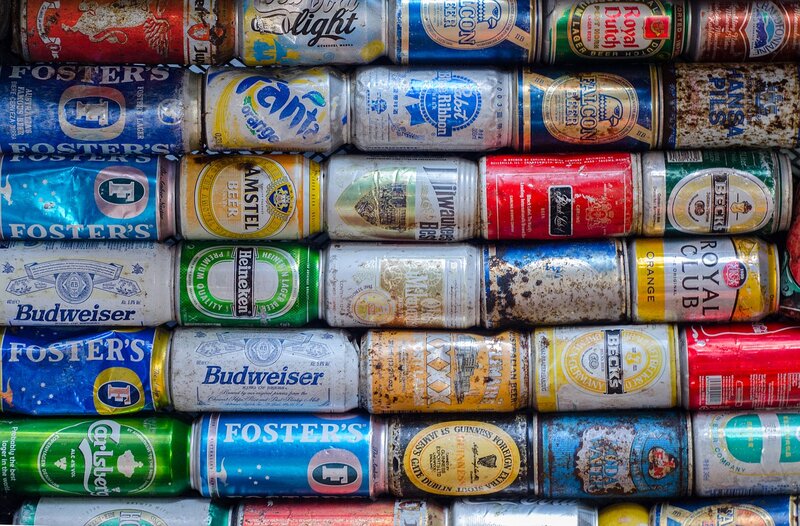In our current state of seemingly infinite waste, a circular economy aims to redefine growth, designing waste out of the system. It is based on three principles: design out waste and pollution, keep products and materials in use and regenerate natural systems.
—
In a linear economy, raw natural resources are taken, transformed into products and then disposed of. A circular economy on the other hand, aims to close the gap between the production and the natural ecosystems’ cycle. It means incorporating the above principles into waste management systems, but it also means cutting off the use of chemical substances and investing in renewable energy.
The Concept of a Circular Economy
In a circular economy, economic activity builds and rebuilds overall system health. It doesn’t only entail reducing the negative effects of a linear economy, but it represents a systemic shift that builds long-term resilience, generates business and economic opportunities, and provides environmental and societal benefits.
1. Energy and Resources
A circular economy aims to design out waste. To achieve this, products are designed to last and are optimised for a cycle of disassembly. They are then reused to make it easier to handle or transform them. The ultimate goal is to preserve and enhance natural capital by controlling finite stocks and balancing renewable resources flows.
In early March 2020, the EU released its Circular Economy Action Plan which requires manufacturers to make products that last longer and are easier to repair, use and recycle. Taking effect in 2021, the plan is a part of the EU’s targets to become a climate-neutral economy by 2050 as outlined in its New Green Deal.
In February 2021, the European Parliament adopted a resolution on the new circular economy action plan demanding additional measures to achieve a carbon-neutral, environmentally sustainable, toxic-free and fully circular economy by 2050, including tighter recycling rules and binding targets for materials use and consumption by 2030.
You might also like: The EU Circular Economy Action Plan Aims To End ‘Throwaway Culture’
2. Following Nature’s Cycles And Designs
The circular economy model distinguishes between technical and biological cycles. Consumption happens only in biological cycles, where biologically-based materials (such as food, linen or cork) are designed to feed back into the system through processes like anaerobic digestion and composting.
These cycles regenerate living systems, such as soil or the oceans, which provide renewable resources for the economy. By their turn, technical cycles recover and restore products (e.g. washing machines), components (e.g. motherboards), and materials (e.g. limestone) through strategies like reuse, repair, remanufacture or recycling.
3. Renewable Energies
The last principle of a circular economy has to do with the fact that the energy required to fuel this cycle should be renewable by nature, with the purpose of decreasing resource dependence and increasing systems’ resilience.
Benefits of a Circular Economy
Environmental benefits include:
- Fewer materials and production processes are needed to create goods
- The use of renewable energy
- Healthy and resilient soils; soil degradation costs an estimated US$40 billion annually worldwide, and has hidden costs such as the increase of fertiliser use, loss of biodiversity and loss of unique landscapes
- An Ellen MacArthur Foundation study found out that a circular economy development path could halve carbon dioxide emissions by 2030, relative to 2018 levels.
- Soil, land use, water and air pollution are better managed
Economic benefits include:
- The circular economy model has the potential to lead to a bigger (up to 70%) amount of material savings. A circular economy leads to lower material needs, as it skips landfills and avoids recycling.
- According to the World Economic Forum report, the development of a circular economy model, together with a new regulation (including taxation) and organisation of the labor markets, can bring greater local employment in entry-level and semi-skilled jobs, including in recycling and repairing
- Another study in August 2018 found that 50 000 new jobs could be generated in the UK and 54 000 in the Netherlands.
- Profit opportunities may come from playing in new markets, cutting costs off with waste and energy reductions and the assurance of continuity of supply.
- More recycled (or even reusable or easily transformed) inputs that have a higher share of labour costs would be used, leaving companies less dependent on the volatility of the price of raw materials. This would also protect companies from geopolitical crises and safeguard them regarding their supply chains In the end, the circular economy model would turn businesses more resilient.
- Overall, it is important to decouple economic growth from resource consumption. The increase in revenues from new circular activities, together with a cheaper production by getting products and materials more functional and easily disassembled and reused, has the power to increase GDP and therefore economic growth, according to a McKinsey report.
What are the Barriers to Circularity?
In our current economic system, there are some barriers to the implementation of a circular economy model, including:
- Social and environmental externalities are not considered in prices, prioritising financial market signals instead of people and nature.
- Prices of raw materials are fickle and at low prices alternative, good quality secondary resources are not competitive.
- Circular economy business models are more difficult to develop, as most investors are still working under a linear economy logic and sometimes upfront investments are required.
- The demand for circular products and alternatives is still small.
You might also like: What Is Sustainability and Why Is It Important?

















